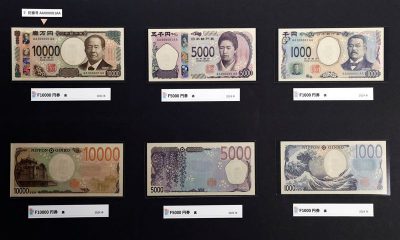Commodities
Oil prices slip from highs; Middle East tensions, steady OPEC output offer support

Investing.com– Oil prices edged lower Thursday, retreating slightly from five-month highs after worsening geopolitical conditions in the Middle East presented more potential supply disruptions.
At 05:55 ET (09:55 GMT), fell 0.1% to $85.39 a barrel, while expiring in June fell 0.1% to $89.27 a barrel, both having previously climbed to their highest levels since October.
” is facing some resistance at the US$90/bbl level, with it unable to break above it so far,” ING analysts said, in a note.
Middle East tensions, Russian disruptions boost oil prices
The crude market had seen demand after Iran threatened retaliation for a perceived Israeli strike on its embassy in Damascus, pointing to worsening conditions in the Middle East. The threat also came as the Israel-Hamas war showed little signs of de-escalating, as a slew of recent ceasefire proposals fell through.
On the Russia-Ukraine front, attacks on key Russian refineries heralded more supply disruptions for Moscow. Several Russian oil and fuel refineries either cut production or were taken out of commission in the wake of Ukrainian drone strikes.
At the same time, the Organization of Petroleum Exporting Countries and allies voted to maintain its current band of production cuts on Wednesday, presenting a tight outlook for crude in the near-term.
Improving Chinese economy aids demand outlook
Crude prices were also cheered by improving economic conditions in top importer China, following a string of positive purchasing managers index readings for March.
Chinese rose back into expansionary territory, while also improved.
But the world’s largest oil importer still has a long road ahead in shoring up its economy, especially as it still grapples with the aftermath of the COVID-19 pandemic.
Mixed US inventories cap oil gains
Crude was held back by mixed readings on U.S. inventories, especially as official data showed an unexpected build in .
The build came as U.S. production remained near record highs- a trend that is expected to somewhat offset a tight outlook for oil markets.
But U.S. fuel demand was also seen rebounding from winter lows, with seeing a bigger-than-expected draw in the past week. The trend pointed to robust demand in the world’s largest fuel consumer.
(Ambar Warrick contributed to this article.)
Commodities
Oil prices rise; U.S. crude inventories plunge, Russia-Ukraine truce eyed
Commodities
India’s Reliance to stop buying Venezuelan oil over US tariffs, sources say
Commodities
Oil prices climb on Venezuela supply worries

 Forex3 years ago
Forex3 years agoForex Today: the dollar is gaining strength amid gloomy sentiment at the start of the Fed’s week

 Forex3 years ago
Forex3 years agoUnbiased review of Pocket Option broker

 Forex3 years ago
Forex3 years agoDollar to pound sterling exchange rate today: Pound plummeted to its lowest since 1985

 Forex3 years ago
Forex3 years agoHow is the Australian dollar doing today?

 Cryptocurrency3 years ago
Cryptocurrency3 years agoWhat happened in the crypto market – current events today

 World3 years ago
World3 years agoWhy are modern video games an art form?

 Commodities3 years ago
Commodities3 years agoCopper continues to fall in price on expectations of lower demand in China

 Economy3 years ago
Economy3 years agoCrude oil tankers double in price due to EU anti-Russian sanctions

































